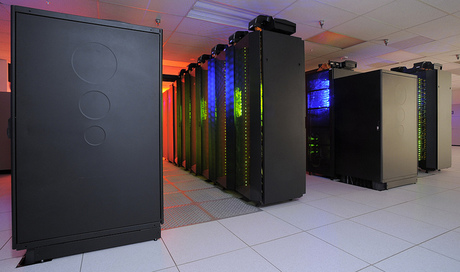IBM invests $3.2bn to prepare for post-silicon era

IBM last week announced a $3.2 billion (US$3 billion) investment towards research into pushing the limits of silicon chip technology and paving the way for the post-silicon era.
The company has allocated the funding for two research projects over the next five years. The first involves developing technology for manufacturing silicon transistors that are 7 nanometres wide or thinner - less than three times the diameter of a strand of human DNA.
The famous observation by Intel co-founder Gordon Moore that the number of transistors on an integrated circuit roughly doubles every two years - colloquially known as Moore’s Law - is widely believed to be coming to an end due to limitations in micro-manufacturing technology.
While it is getting harder to squeeze out these gains, semiconductor manufacturing technology is expected to scale down from today’s 22 nanometres to 14 and then 10 nanometres over the next few years.
But according to IBM Research Senior Vice President John Kelly, scaling to 7 nanometres or below will require significant innovation in semiconductor architectures, as well as the invention of new manufacturing tools and techniques.
“The question is not if we will introduce 7-nanometre technology into manufacturing, but rather how, when and at what cost?” he said. “This new investment will ensure that we produce the necessary innovations to meet these challenges.”
The program also includes further research into silicon photonics, a technology based on transceivers that use pulses of light rather than copper wiring to transmit data between components of a computing system. This technology has applications in servers, large data centres and supercomputers, and particularly computing architecture designed for big data analytics.
Even if cost-effective 7-nanometre technology can be developed, IBM believes the industry is rapidly reaching the point where significant performance and power efficiency gains can no longer be squeezed out of silicon. For this reason, the second part of IBM’s research program aims to prepare for a post-silicon future.
The company’s researchers are exploring whether carbon nanotubes - single atomic sheets of carbon rolled into a tube - could replace silicon in sub-7-nanometre chips. Modelling of electronic circuit design suggests that nanotubes could lead to a five-to-ten-times improvement in performance compared to silicon circuits, the company said.
IBM is also exploring the use of graphene - single atomic layer sheets of pure carbon - in switching transistor design. Electrons move about 10 times faster in graphene than in silicon, and the material could be particularly useful in chips for smartphones and other mobile devices.
The $3 billion funding commitment also covers existing R&D programs including research into new computing architectures that support quantum and cognitive computing. While the classical bit of data can only be in one of two states at any given time - 0 or 1 - the qubits used in quantum computing can be in either state or a superposition of both.
While research into quantum computing is still at its early stages, IBM said the technology may in the long term help solve problems that are either impossible or impractical to solve using today’s conventional machines.
The company’s cognitive computing research centres around neurosynaptic computing. This will involve developing computing systems based around the human brain, seeking to emulate the brain’s computing efficiency, size and power usage. In the long term, IBM said it hopes to build a system with ten billion “neurons” and a hundred trillion “synapses” that still only consumes one kilowatt of power and occupies less than two litres of volume.
IBM is not the only technology company engaged in rethinking computer architecture. Last month, HP announced its ‘The Machine’ project, a supercomputer designed to use silicon photonics instead of copper wires to transmit data. The first prototype is expected to be developed in 2015, and HP expects the design be up to six times more powerful than existing servers while requiring 80 times less energy.
Optical fibre: the foundation of AI-ready data centres
A high-performance optical fibre foundation is the critical infrastructure that will ensure data...
Why businesses can't afford to wait on slow data
GPUDirect Storage cuts out the CPU acting as middleman and allows data to flow directly between...
The future of data centres in the age of AI
AI will continue to drive transformative changes within the data centre industry, especially...




